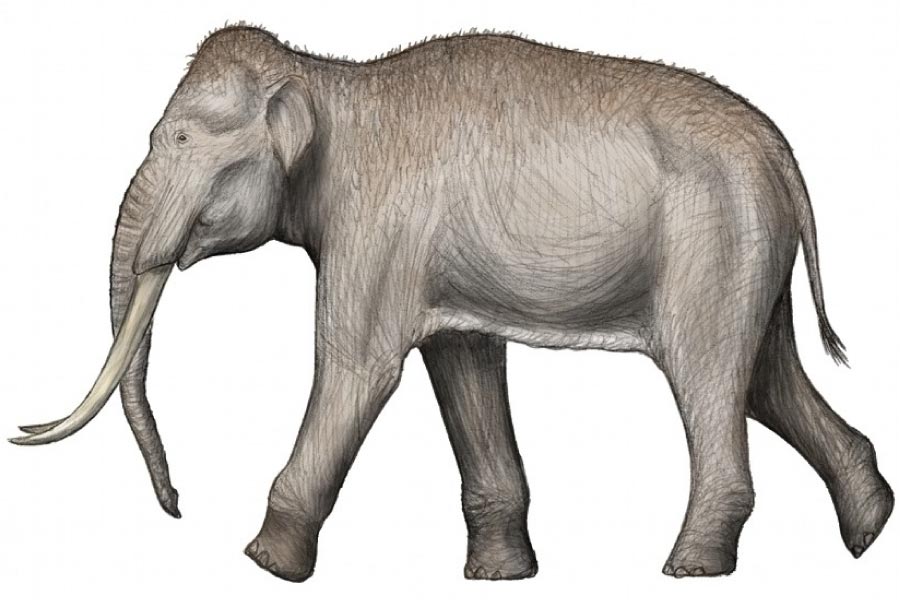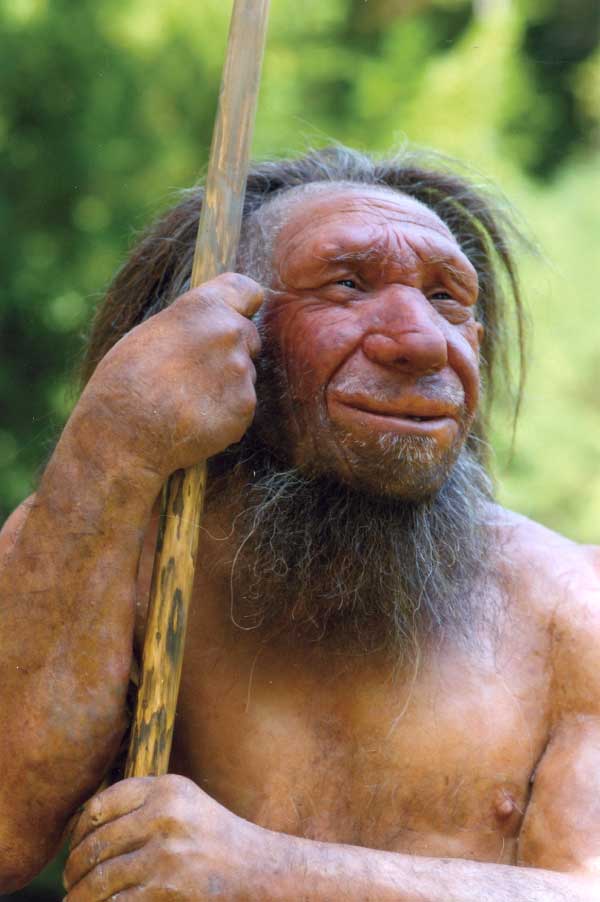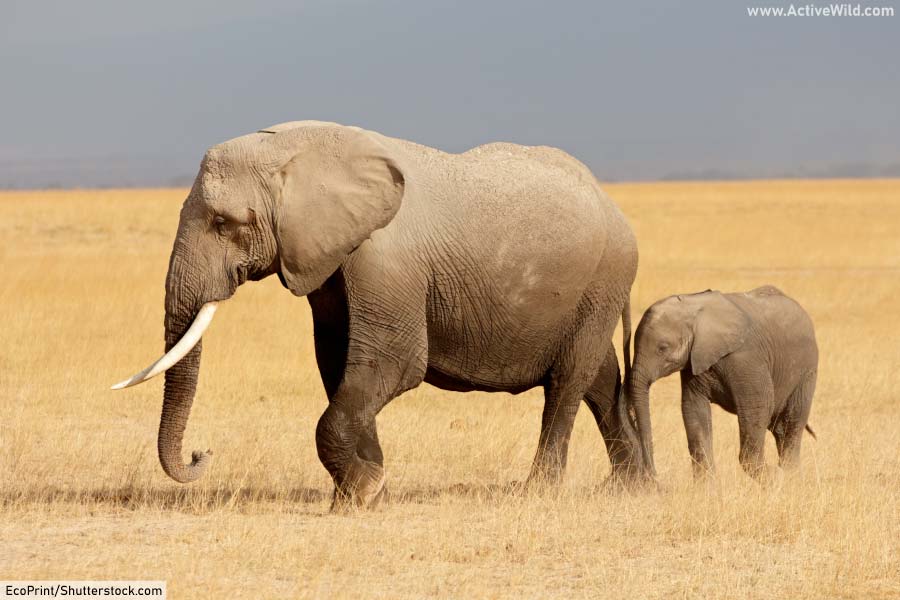The straight-tusked elephant was one of the largest land mammals that ever lived. The extinct species, which was significantly bigger than today’s African bush elephant (pictured above), lived alongside Neanderthals in prehistoric Germany, around 125,000 years ago.
A recent analysis of fossilized straight-tusked elephant bones reveals the relationship between the prehistoric species and its early human hunters.
Related Pages
- When Did Humans First Appear On Earth?
- Human Evolution Timeline Chart With Pictures And Amazing Facts
- Did Humans Live With Dinosaurs? The Last Dinosaurs & First Humans
- Animals Of The Stone Age: A List Of Stone Age Animals With Pictures & Facts
Research Findings

Situated near Halle in Germany is the Middle Paleolithic archaeological site Neumark-Nord. Among the thousands of Pleistocene artifacts and fossils that have been recovered from the site are the remains of at least 57 straight-tusked elephants – the largest gathering of the species yet discovered.
The elephants were represented by over three thousand separate fossils, with some elephants being found nearly complete, and others being found scattered over various locations.
The elephants would have lived around 125,000 years ago, during the last interglacial – a period of warmth before the Arctic polar ice sheets would once again expand to cover much of the Northern Hemisphere.
Previous research had revealed that nearly all of the straight-tusked elephants found at Neumark-Nord were adults, and most were males.
This is an unusual grouping, both in fossilized and living elephants. Usually, it is adult females and infants that live in herds, with adult males tending to be more independent.
Recently, a team of scientists re-examined the elephant fossils, and found evidence that might explain this inconsistency. They published their findings in this report.
The team found that many of the fossils were marked by cuts likely caused by the stone tools of early humans. This showed that the elephants had been hunted, and prepared for consumption, by the Neanderthals known to reside in the area at the time.
This would explain the unusual male / female and age ratios of the fossilized elephants; the Neanderthals are thought to have targeted male elephants, due both to their greater size and the fact that they were solitary, which may have made them easier to capture.
A likely hunting strategy would have been to force the huge animals into the muddy shore of a lake. Here the elephant would tire, allowing it to be subdued with spears.
It is not just the hunting of the elephants that would have required the cooperation of a significant number of individuals; preparing the animal’s meat for consumption would also have required a considerable amount of work, even when shared among numerous individuals.
It is calculated that a single male straight-tusked elephant would have been able to provide the daily nutritional requirements of at least 2,500 Neanderthals.
The sheer amount of food, together with the labor required to hunt and process a single elephant, suggests that Neanderthals lived or congregated in groups much larger than previously thought, and/or they had the means to preserve food.
Neanderthals were previously thought to have lived in groups of up to 20 individuals. The new research suggests that they formed larger congregations – ether temporary or permanent – in order to hunt and prepare elephants.
Straight-Tusked Elephant
The straight-tusked elephant is a long-extinct member of the elephant family, Elephantidae. It lived in Europe and western Asia from around 800,000 to 100,000 years ago, during the Pleistocene epoch.
The prehistoric elephant was an enormous animal, standing up to 4.2 m / 13.78 ft tall and weighing up to 15 metric tonnes.
That’s significantly bigger than today’s African bush elephant – the largest living land animal – which stands a maximum 3.96 m / 13 ft. tall and weighs up to 10.4 metric tonnes.
Although huge, the straight-tusked elephant wasn’t the largest elephant that ever lived – that accolade goes to its close relative, the Asian straight-tusked elephant Palaeoloxodon namadicus.
The Pleistocene Epoch
The Pleistocene epoch is part of the Quaternary Period – the period of time in which we currently live. It began around 2.58 million years ago, and ended around 11,700 years ago. The Pleistocene was followed by the Holocene epoch, the current epoch.
The Pleistocene was an ice age – a period marked by a cycle of cold periods, or “glacials”, and warmer periods, or “interglacials”. The range of the straight-tusked elephant likely grew and shrank as interglacials came and went.
- You can find out interesting facts on epochs and periods on this page: Geologic Time Scale
Neanderthals

Also inhabiting Europe during the Pleistocene were Neanderthals – hominids (member of the great ape family, Hominidae) closely related to humans.
Neanderthals were slightly shorter than the average modern human, but were powerfully built, and likely highly intelligent – their brain cases were significantly larger than ours.
Neanderthals lived hard, physically demanding lives, with the majority of known specimens showing signs of having been injured, often seriously, at some point in their lives.
Many Neanderthal injuries were caused by animal attacks, with bears, big cats and wolves being the main culprits. Like the fearsome cave bears and cave lions of the time, Neanderthals lived in caves, which is perhaps one reason why injuries from animals are so common.
Neanderthals used tools, and could create fire and make simple clothes. They even used primitive medicines.
Neanderthals were apex predators that hunted a variety of animals. Deer are thought to have been the early humans’ most common quarry, but animals such as goats, cattle, bears, birds, rhinos, mammoths – and elephants, were also taken.
Like modern humans, Neanderthals were omnivores that also ate plants and fungi.
Discover More With Active Wild
- When Did Humans First Appear On Earth?
- Human Evolution Timeline Chart With Pictures And Amazing Facts
- Did Humans Live With Dinosaurs? The Last Dinosaurs & First Humans
- Animals Of The Stone Age: A List Of Stone Age Animals With Pictures & Facts
- Fun Facts on Elephants: Pictures & Information On Elephant Species, Family, Ecology & Conservation


